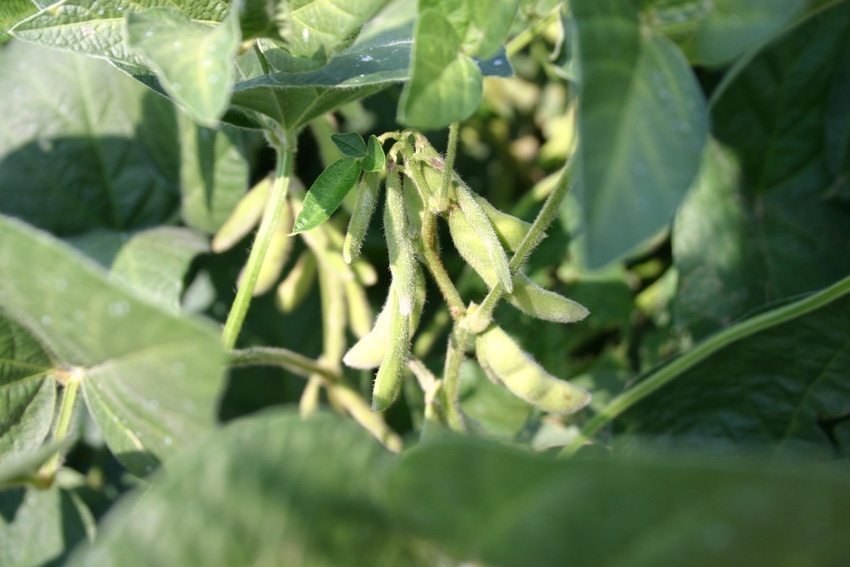
What is the best grain rotation for your area of the Mid-South? An ongoing, wide-ranging study is searching for answers.
At the recent Tri-State Soybean Meeting in Stoneville, Miss., Bobby Golden explained the project. “You might not be aware that we’re investigating grain rotations in the Mid-South,” said Golden, an assistant professor with Plant and Soil Sciences at Mississippi State University.
In the last 10 to 12 years as more corn has come into the Mid-South, what is happening to soybean yields? “We began looking around and decided there wasn’t a lot of long-term rotational data in the region. Wayne does have a long-term study but it’s cotton based. We don’t have a study that’s grain based.”
Now in its second year, Golden hopes the project “will go for another six or seven years so we can get at least two rotation cycles.
“One of my biggest concerns and what got me excited about – and something many (producers) here do – is the burning of corn stubble. For the last three or four years, especially where corn stubble is burned, is we’re beginning to see issues with soybeans and sulfur.
“We no longer get free sulfur out of the atmosphere since we cleaned up after the Environmental Protection Act in the early 1970s. We do a really good job of putting sulfur on our corn.”
That isn’t always the case with soybeans. “The whole slant we put on the project is: if we grow corn and grain sorghum in rotation with soybean, what does it do to yields.”
Setup
There are 12 base treatments that range from continuous corn and soybeans to one-to-one rotations with corn and soybeans to two-to-one rotations going both ways. “We also have dryland sorghum and a three-way double-crop system rotation.
“They’re split by residue management techniques. So, for every test we’ll have a burn side and a non-burn side. Obviously we don’t burn soybean stubble when soybeans are in the rotation – only the grain sorghum and corn stubble.”
There are still high-intensity burning areas. “Some guys have that old cotton mentality of no stubble being left out. We’re losing a lot of sulfur. If you’re burning corn or sorghum stubble, you’re losing 75 percent of the sulfur that was taken up into that straw, not counting what was taken up in the grain. That can’t help but impact our soybean yields in the long run.”
All the soybeans grown in the project are Group 4s.
Yields
Looking at 2014 baseline soybean yields, irrigated and rain-fed, shows the Stoneville location under irrigation provided an extra nine bushels. “We generally believe it’ll be more than that but there was a lot of rain in 2014. We’re still working through the 2015 data.”
Texas wasn’t included in the results. The reason? “Texas has a lot of pastures and even on their research plots there were some issues with dicamba getting on the soybeans.”
Looking at the corn yields, “it was interesting that Stoneville led the pack and was slightly above the Portageville, Mo., (location). There’s big latitude there and shows we can grow really good corn down here in the Mid-South.”
Grain sorghum, meanwhile, had a bit of difficulty in the lower Mid-South. “In Stoneville, we had problems with the sugarcane aphid and ended up harvesting our crop with a bush hog. Texas knows how to grow grain sorghum and they rang the bell beating everyone. Portageville was interesting since they grew good grain sorghum despite bird predation.”
Another component of the study is to try and determine how the rotations impact nematode levels that may be detrimental to soybeans. “Looking at Stoneville, we had an overabundance – based on other sites – of reniform, rootknot and lance nematode. It’s interesting how, across state lines and regions, there are different nematode species.”
The sugarcane aphid remains one of “the biggest issues we’ve faced so far in establishing these trials across the Mid-South. It’s held back our grain sorghum plot yields. This year, we did a lot better job controlling it in Stoneville. We had to make three applications but still had reduced yields in the 65-bushel range. We had midge and sugarcane aphid problems.”
Group effort
Golden was insistent that the project be described as a group effort. “We couldn’t do this without Lanny Ashlock and Larry Heatherly (of the Mississippi Soybean Promotion Board). It’s tough to pull off such a multi-faceted study but we’re doing it. The National Grain Sorghum Board is going to get involved with the project this year.
“This is fully supported by the Mid-South Soybean Board and partially supported by the USB (United Soybean Board).
“The Mid-Soybean Board is made up of a consortium of the state and began about seven years ago by Lanny Ashlock, who is the caretaker. It’s made up of charter members Arkansas, Louisiana, Mississippi and Texas. Missouri is now a part of this with Tennessee hoping to come on board. There is talk about possible bringing Oklahoma in.”
This board promotes research over the entire region “so we can get better information to producers. We try to take those monies and leverage them to get some of the national money to come back into our states.”
About the Author(s)
You May Also Like




